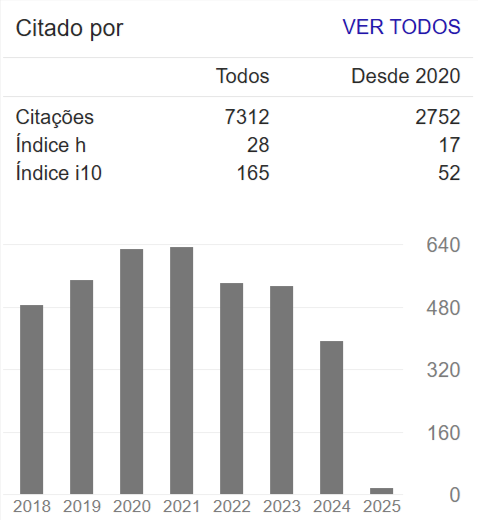Evaluation of the use of gas chromatography to monoaromatic hydrocarbon detection in groundwater in the northern city of Fortaleza (CE)
Abstract
The groundwater contamination by petroleum products such as gasoline is one of the main impacts of retail comercial activity of retail automotive fuels. And one of the ways to detect such impact is to characterize the quality of groundwater near these sites for the presence of monoaromatic hydrocarbons such as benzene, toluene, ethylbenzene and xylene isomers (BTEX). In this sense, we sought to characterize the quality of groundwater for the presence of BTEX in the north of the city of Fortaleza - CE, study area of this research. For this, it deployed the analytical methodology for the detection of BTEX by gas chromatography coupled to PID detectors (photoionization) and FID (flame ionization), preceded by the technique of pre-concentration of static headspace sample. The method was validated by assessing the selectivity parameters, linearity, precision (repeatability), accuracy (recovery), limit of detection (LOD) and limit of quantification (LOQ). Sampling of groundwater was carried out by low-flow method, according to ABNT NBR 15847/2010, with the aid of an automated sampling system - Low-Flow Sampling on 11 monitoring wells. The analytical method was very selective, repetitive linear, showed good recovery (70 to 110%) and low detection limits (from 0.01 to 0.08 g / L) and quantitation limit (0.04 to 0, 32 g / L). BTEX compounds were detected in all monitored wells, althoughconcentrations measured were very low values of the maximum established by CONAMA 396/2008, which is 5 µg.L-1, 170 µg.L-1, 200 µg.L-1 and 300µg.L-1 for benzene, toluene, ethylbenzene and xylenes, respectively.

















